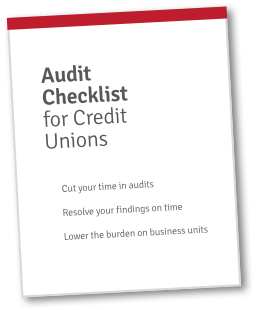Audits and examinations are not for the faint of heart. They require detailed, meticulous work, and they often drag on interminably. Most people who don’t work in compliance do their best to avoid them if they can. And yet, for credit unions, audits are a regular part of life.
Your Board Should Play a Big Role in Audits from Redboard on Vimeo.
Credit union audits involve many key players. Audit and compliance teams take on the most responsibilities, serving to direct and complete most tasks. Auditors, both internal and external, are critical players. However, there are important individuals outside the usual audit team who contribute as well. And it includes more than just the usual business users.
Often overlooked (or at least, underappreciated) is the role of the board of directors in audits and compliance.
The Role of the Board in Credit Union Audits
During active audits, the board of directors doesn’t have to do much. They’re not the ones in the trenches. However, they’re still crucial to an audit’s success. After all, the board sees the audit results when the supervisory committee and auditors present them.
At this stage, the board must review what was found. Did tellers follow improper procedures for depositing cash into the vault? Were auto loans booked at an incorrect rate? Any of these findings must be assessed by the board, who may then help to determine corrective action. And, after corrective action is taken, the chairperson signs off on it.
(And everyone hopes for no repeat findings.)
But this role sounds less involved than it actually is. In reality, boards do a lot more than tell people what to do once the minutiae and details are finished. The board’s real role in audits shows up in what they do outside of the audit process.
The Board’s Role in Credit Union Compliance
A culture of compliance is a necessary foundation of a strong compliance program. And a culture of compliance can’t exist if it doesn’t come from the top down. That is to say, the most important role that boards play in audits is in setting policies, processes, and procedures that ensure consistent compliance.
They direct and oversee credit union management, adding an additional layer of accountability to compliance issues. Direction and oversight accomplish more than just setting the tone and tenor of compliance in a credit union, though. In fact, the board is part of the first three lines of defense in risk management. As we’ve previously stated,
“The first line of defense is normal management operations. Every operation withing any well-run organization has standards for the results they deliver, and risks related to how they deliver them.
Operational managers own and manage those risks. They are responsible for the results and the risks of their operation.”
Boards determine the level of risk the credit union can manage. They advise on policies and processes. In so many ways, compliance starts and ends with the board. Consequently, every credit union board member must help to set the tone for compliance. In many ways, it’s their biggest role in any audit or examination.

FREE: Audit Checklist for Credit Unions
4 key principles and 9 questions to jumpstart your audit planning. From leading credit unions.How to Improve Your Credit Union’s Audit Results
We’re not the experts on how to get more buy-in from your board, or how to ensure they set the proper tone for success.
However, our automated audit management software can help implement your lines of defense. For compliance teams, Redboard enables you to better execute quality control and compliance activities. Because it is so intuitive and easy to use, credit unions have found that findings no longer stay open forever and backlogs of findings aren’t so large any more.
For your third line of defense, Redboard automates multiple processes around internal audits, external audits, and examinations. Because it is so intuitive and easy to use, audit teams waste less time on minutiae, and business units no longer struggle keep on top of their responsibilities. Credit unions have seen up to 33% time and efficiency savings with Redboard.
Want to learn more? Credit unions have seen great results and they love the platform. But just because we've had success with others doesn't mean it's the right fit for your credit union. Schedule a 60-minute credit union executive assessment call, and we’ll evaluate your situation together to see if you might see similar results.





